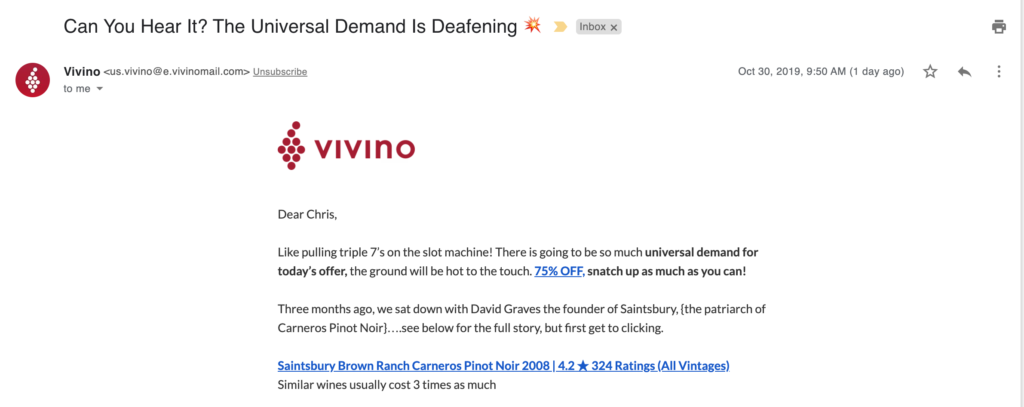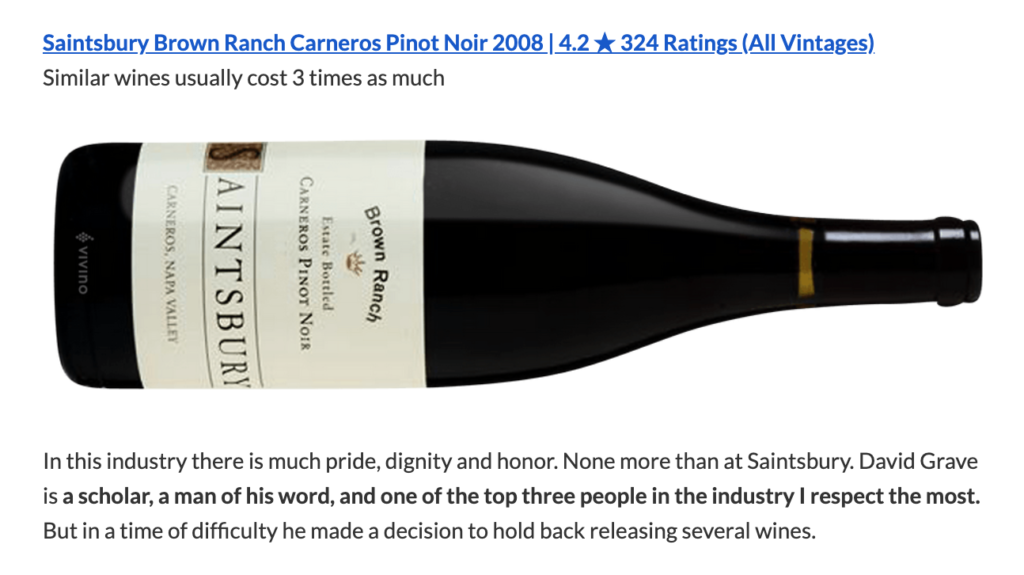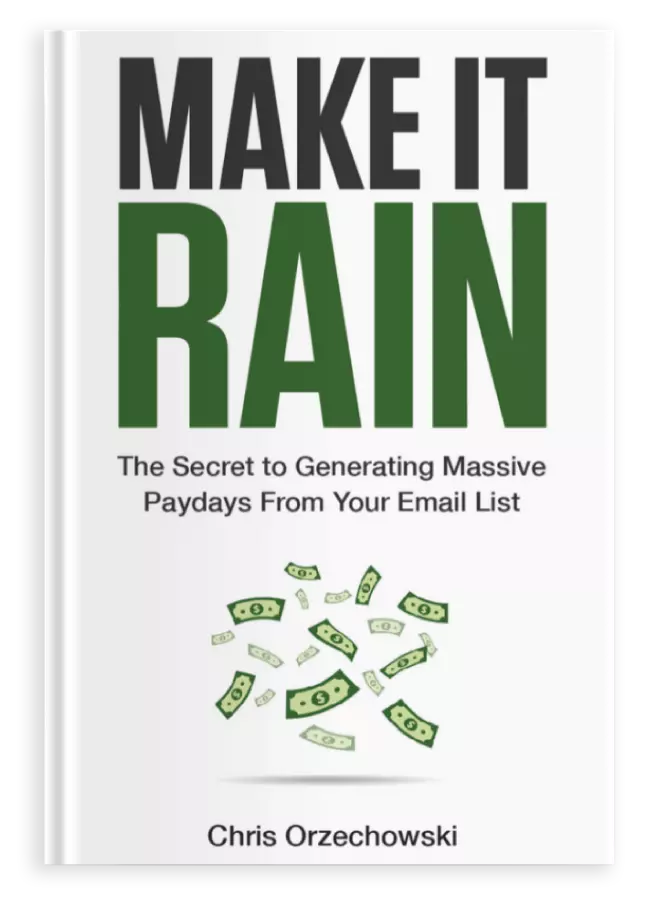While I was waiting for my Uber to the airport back from Copy Chief Live, a young copywriter approached me and asked me a question.
He was working for an e-commerce company. A company with a huge catalog of products. Well over a hundred different products, to be more specific.
He wanted to know: “How do you know what offers to promote and when… especially when you have that many different products?”
It’s a great question.
Especially if you a store-based or ‘catalog’ based e-commerce business.
I thought about it for a second.
I jogged my mental swipe file to think of an example of a company that was able to navigate these waters successfully.
And that’s when it hit me.
He needed to use something I call the “Insider Model.”
The Insider Model is an e-commerce email marketing strategy I’ve been developing for some of the companies I’ve worked with.
The whole gist of it is this:
Most people got “a guy” or “a girl” who’s on the inside of some particular industry.
It could be the butcher down the street who’s always got the choicest cuts from a local farm. Every time you walk into the shop, he comes out from behind the counter, gives you a hug, asks about your family… and then tells you all the special stuff he’s got hidden in the back – the stuff he reserves for his favorite customers.
This business owner becomes your friend with connections inside an industry who can get you access to stuff the public never sees.
The Insider Model is where YOU, the owner/marketer in the company are the person who secures awesome deals for people.
You’re “their guy/girl who’s got the goods.”
When you use the Insider Model as an email marketing strategy, you basically send an email to your list every day and let people know about the awesome deals you secured for them.
You write these emails like they’re a personal email… the closer it looks to a personal, one-to-one conversation, the more effective this will be.
You weave in stories.
You take people along for the adventure and recant how you discovered these items.
You share how the products were made and/or selected.
You give people a peek into the process that went into procuring your products.
It begins to feel like they know you and you know them.
People start to form a bond with you. They’ll open and read every email, whether they intend on buying that day or not. And even if they DON’T buy, they stay on your list because they enjoy reading your emails.
And when they finally ARE ready to buy, YOU are the first person they go to… because you’re their guy.
You’re their ‘leather girl’… who’s got the best jackets and bags.
You’re their ‘wine guy’ who’s always got the best new stuff coming out of Napa Valley.
Or, you’re their ‘gun guy’ who’s securing the coolest military-style optics for the best possible price.
In a nutshell:
YOU are the person who’s top of mind awareness and has name recognition… so when someone needs that kind of item, they only think of buying from you because of the relationship and trust you’ve established.
The reason I’m taking so long in this preamble to explain this idea is because for this edition of Email of the Week… I found an email list that perfectly demonstrates the power of the “Insider Model” concept I created.
Let’s take a look.
This is the 12th installment of my Email of the Week series. (Catch up on previous episodes here.)
And in case you’re new around here, here’s how this all works…
The Rules For Email Of The Week
Each week, I go out into the wild to find a super-effective e-commerce marketing email… and I break down what made it work. My goal is for you to tune in each week, so I can teach you strategies and best practices YOU can use to make your own emails better.
I find these emails in my inbox, but I also accept suggestions from readers who have a remarkable email they’d like to share.
If you recently received an email that was so awesome it made your jaw drop, I wanna see it.
Forward it to me (chris at theemailcopywriter dot com) with a brief message about what you liked about it. If I choose to do a breakdown of the email you sent, I’ll give you a shout out and link to your site.
The only rule is… you can’t pick yourself.
Now then, without further ado, let’s check out the Email of the Week!
“You need a wine rec? Lemme connect you with my guy, Greg…”
Vivino is a wine company that does a lot of things right.
For context: they have an app.
When you log on and create an account, you get to start rating and tracking the wines you drink. This data helps them find other wines that you’d like too, based off what you already like.
Super useful service.
And there’s even a social media feature to it where you can share wine recs and talk wine with your friends.
Overall – really cool.
Once you become a member, they sell you wine based off your indicated preferences.
Now, Vivino tends to use a few different email strategies concurrently. Most likely because I’d imagine I’m on a few different segmented lists.
I don’t necessarily LOVE all of the emails I get from them.
But there was one email campaign they were running using the Insider Model that I had to share with you.
Here’s how they use it:
Every week or so, I get an email from Greg.
Greg has essentially become “my wine guy.”
He earned that distinction because he’s the guy going out and securing awesome wine deals for me… and he’s giving me first dibs before they sell out.
Every week, he writes me an email… tells me a little story about the wine he got a deal on… and then he asks if I wanna buy it.
Let’s take a look at how this works:
Now…
You know I don’t like When People Title Case Subject Lines.
I’m also not a fan of sending these emails from Vivino. If I were running the email marketing over there, these emails would come from Greg… NOT from Vivino.
It’s much easier to build a relationship with a person, rather than a faceless corporation.
But, it’s ok.
The subject line is ok. Question draws you in… there’s some social proof implied about a wine that’s in-demand. And there’s an emoji in there for good measure… because hey, why the fuck not, right?
As we get into the body copy, one thing you’ll notice is that Greg gets right into the objective of the email.
He doesn’t bury the fact that he’s trying to sell something.
You know why you’re here.
You know why you opened this email.
It’s because you wanna buy some wine.
And we don’t need to pussyfoot around that fact.
You like wine. They get the hottest stuff.
Match made in heaven.
You don’t need to be shy about selling when you have awesome products.
Don’t ever let anyone shame you for selling.
You cannot change someone’s life unless you get your products into their hands. And that’s one of the things I love about Vivino… they sell.
If you need to be coddled and nurtured and incubated and need to be made to feel like a special snowflake for 5+ years before you ever spend any money on a bottle of wine… then you can go find someone else to bother.
At least, that’s my philosophy.
Anyway, they introduce the sale and then launch into a really quick story.
Notice the use of time-place-tension in the opener of the story:
“Three months ago, we sat down with David Graves…”
This kind of opener helps create a vision in your mind.
That being said…
I do think the narrative is a bit rushed and even a bit unorganized. (Why are you telling me to click before unfolding the story?)
I mean… maybe it worked out well. I don’t know.
I just feel like they could have drawn this out a little bit more and took us on more of an adventure.
Anyway…
They include a link, a price anchor and a clickable picture of the wine.
It’s abundantly clear that they want you to click through to the sales page.
Personally, I think it’s at the expense of the narrative.
My belief is that if you’re selling wine, you need to share the story.
Why?
Because people are going to take that story and repeat it to their friends when they show up to dinner with that bottle of wine. Then, the friends are going to taste it and BECAUSE of that very story… they’re going to tell themselves that the wine tastes better.
And because they know the story of the wine and the winemaker, they’re going to feel a stronger affinity to that brand and have a sense of familiarity. This will cause them to either seek out the wine or buy it directly… or look for it the next time they’re in the store.
So I DO wish they reorganized this email and lead with the story and THEN inserted the call to action.
But, it’s fine.
I’m not going to lose sleep over it and neither should you.
What’s cool about this copy block is that he introduces David, and introduces that point of tension.
What was the difficult decision?
Why did he have to hold back several wines?
And, the most important question they want you to think as you’re reading this:
Does that mean THIS bottle is rarer and more valuable than others?
Because if so… you’re buying it. Especially if it’s 75% off the regular market price.
So now we get the payoff.
David held onto these wines because it was 2008 and everyone was panicking.
Maybe people wouldn’t have bought. Maybe he wanted to wait for a happier time where people would enjoy these wines with a lot less stress?
I’m not sure… this could have been explained better. But maybe it leaves out just the right amount of context… so you can fill in the reason why with your reason. That’s not a bad storytelling technique.
The important thing is: these wines are great, they’ve been aging under the careful eye of a master winemaker… and now they’re ready to move.
Greg does a great job of explaining why these wines are on sale, for this price, right NOW.
The winemaker held onto these wines and weathered the storm… and now he’s pricing them to move.
YOU benefit from the huge savings.
It’s a win-win for everyone.
How to make The Insider Model work for you.
I do think the copy and flow could be improved a little bit in this email.
That being said… I think Vivino (and Greg) do a masterful job of using this Insider Model for e-commerce email marketing.
They procure products, secure great deals, and then let you in on them before anyone else.
You feel like a VIP.
You get to brag to your friends because of the awesome deal you got.
And you actually start looking forward to being sold more cool stuff.
The advice I gave to that copywriter who I mentioned at the beginning of this article was to embrace this model.
Because even if you’re not securing special deals… the thing to remember is this:
If you have dozens (or hundreds) or products… it’s simply a matter of rotating them through your list.
Pick one product a day, tell the origin story, share the journey for how it was made. Share the benefits and dimensionalize them.
And then encourage people to buy.
The next day, wake up and send an email about a different product.
You can rotate your offers every single day and you’ll capture a lot of sales for people who are in the market for those products right now.
You’ll ALSO generate some product awareness. Because there are people on your list who don’t know about all of your products.
If they’re going to buy it someday, they have to FIRST know that it even exists.
If you take this approach of introducing a new product every single day, you can pepper in some sitewide CTAs and promotions.
Even if people don’t buy that very day, they’ll have the awareness they need to go back to your store/catalog when they finally are ready to pull the trigger.
Vivino does an incredible job of utilizing this approach.
Great job Vivino, keep up the good work.
**One last thing**
This strategy is NOT just for wine companies and/or consumable product companies. This can work for you, you just need to get creative. The big takeaway here is to focus on being ‘the person’ at your company who develops a relationship with your buyers and fills the void in their life that only your product can satisfy.
If you’d like help figuring out how to do this with your company, just shoot me an email.
Big Takeaways from Vivino
- Got a good deal? Share it unabashedly.
- Use time-place-tension to set up your stories.
- Never apologize for asking for the sale.
- Make your emails feel personal.
- Rotate your offers frequently so people keep coming back to see “what else you got?”
- Introduce urgency and scarcity.
- Tell a story about the product that’s simple enough for people to share.
- Become ‘the guy’ or ‘the girl’ who’s got “the good stuff.”
- Follow up daily, your true fans and best buyers will stick around because they like you.
- Use multiple links and calls to action.
What To Do Now
- Subscribe to my email list so you can get ALL of the Emails of the Week delivered straight to your inbox, automatically.
- Leave a comment for me below and let me know what you liked about this email.
- Send this breakdown to someone you know who has a physical product business. This might help them develop a more effective email strategy.
- Get on Vivino’s email list. You’ll get hot deals on some awesome wines.







Thanks this is very helpful! I want to be a copywriter myself writing 10 e-mails a month for say $100 a day. Is this opportunity possible??